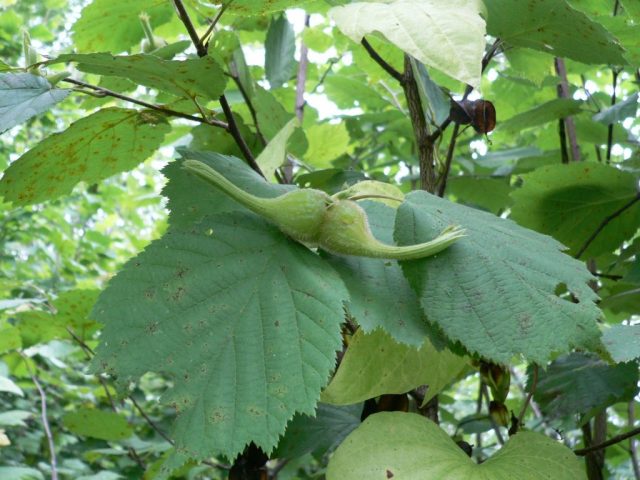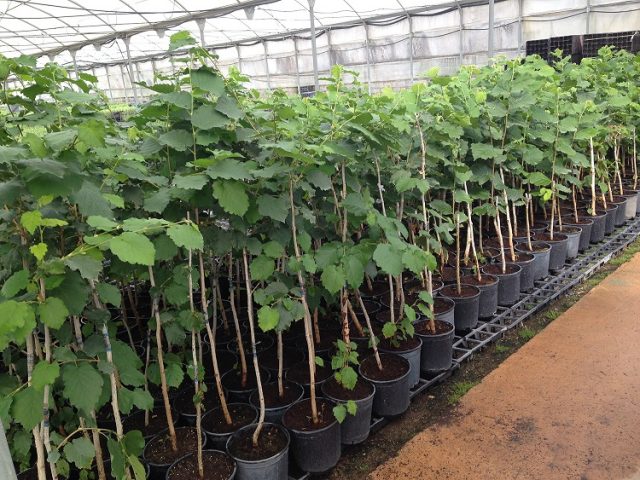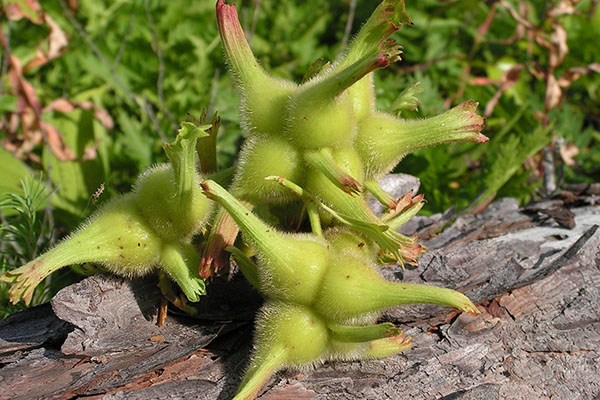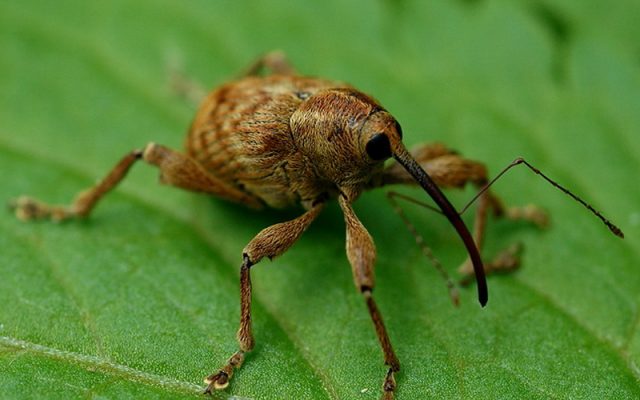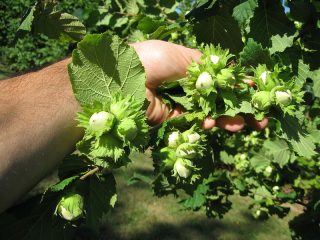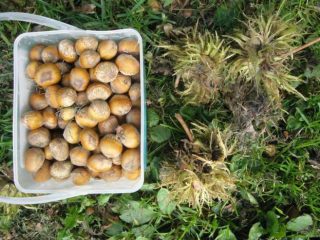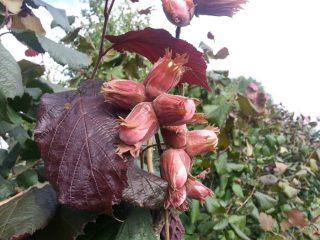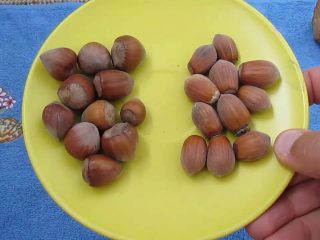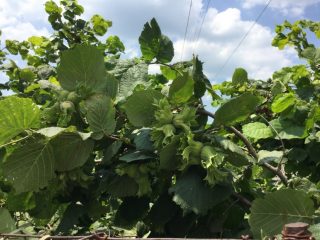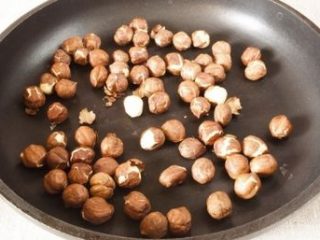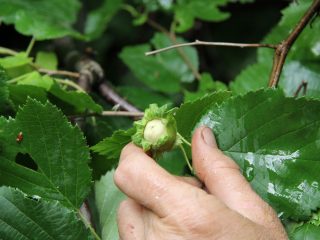Content
Manchurian hazel is a low-growing shrub (height does not exceed 3.5 m) is a variety of Zimbold hazelnuts. The variety has been known since the end of the 19th century, imported from Japan. In Russia, the culture is grown in the Far East, Manchuria, and the middle lane. Manchurian hazel is often found in China on the edges of forests and mountain slopes. The plant is bred for fruit production, practically not used for decorative purposes.
Description of Manchurian hazel
It is a low-growing (3-3.5 m), well-branched shrub, consisting of several trunks. The branches are thick, reaching 15 cm in diameter. Young shoots of Manchurian hazel are covered with a small, soft fluff. The trunk is gray-brown bark with small cracks.
Leaves are small, oblong, ovoid, jagged at the edges, soft. There are large ones up to 12 cm long and 7 cm wide. Basically, the entire crown is covered with medium-sized foliage: 5 cm long and 3 cm wide. The leaves are dark green, there is a rusty, orange or burgundy spot in the middle. In autumn, their color turns dark orange.
In the spring, earrings appear on the shoots of Manchurian hazel - male inflorescences, collected in 5 pieces on one cutting. Their length can reach 14 cm. Inflorescences are covered with light beige sharp scales. Manchurian hazel blooms late for its species - in the first decade of May.
Hazel bears fruit in September. There are few fruits on one bush. 2-4 nuts are attached to one handle.
The nuclei are oval, rounded, 1.5-2 cm long. The shell is thin, fragile, the fruits of Manchurian hazel can be eaten, they have a good nutty taste.
Spread
In nature, culture grows in the Far East of Russia, in the Chita region, Khabarovsk, Primorsky Krai, in the central regions. Abroad, Manchurian hazel can be found in China, Japan, Korea. The shrub grows on the edges of coniferous and deciduous forests, tops of mountain slopes, in open forest glades. Forms dense undergrowth at the sites of deforestation or forest burning.
Plant application
Manchurian hazel is used to produce fruits. Their collection is difficult due to the hard bristly plumes. It is also planted for landscaping hills and ravines, plantings, deforestation sites. This fast-growing culture covers the scorched forest edges and fields.
In cities, they are used for landscaping parks and alleys. In gardens they are planted as hedges. Thanks to strong wide shoots and large leaves, hazel forms dense, impenetrable thickets.
Planting and caring for Manchurian hazel
The culture is planted in early spring before the juices begin to move or in late autumn after harvest, a month before the onset of the first frost. Experts recommend an autumn planting. It allows you to harden Manchurian hazel in winter. The next spring you can get a strong, well-rooted plant.
Site selection and preparation
Hazel is planted in the southern or western part of the site, protected from the winds. The place should be well lit or in partial shade. The main thing is that the groundwater does not lie closer than 2 m to the surface of the earth. It is good to plant shrubs near buildings that will protect them from drafts. You can not plant hazel in lowlands, where melt water accumulates in spring.Tall shrubs and trees should be 5 m from hazel.
It is better to choose a loose, fertilized, slightly acidic soil. Swampy or clayey soils are not suitable for planting hazel.
Selection and preparation of a seedling
For planting, they choose tall plants with strong shoots. There should be as few leaves on them as possible, the roots are long, well-branched. It is good to buy seedlings in the nursery. A wild plant does not take root well and gives a poor harvest. The roots of a good seedling are about 0.5 m long, before planting I shorten them by half.
Landing
3-4 weeks before planting hazel, they dig a hole about 50 cm in diameter, allow the soil to sit down. After that, a fertile mixture is poured onto the bottom: soil, humus, manure in equal parts. 400 g of wood ash and a glass of superphosphate are added to the mixture.
The following is the landing algorithm:
- In the center of the pit, it is necessary to form an earthen lump.
- Place the roots on top of it, spreading the processes.
- Next to the bush, it is necessary to drive in a peg, to tie the trunk of the plant to it.
- After that, the pit is covered with loose earth and rammed.
At the end of planting, 2-3 buckets of water must be poured under the bush. The soil around the trunk within a radius of 1-2 m must be covered with sawdust or covered with a spruce forest.
Care
In the summer, hazel is watered with 10 liters of water 2-3 times a month. A few days after watering, the soil must be loosened to provide air access to the rhizome. After watering, the trunk circle must be covered with mulch.
Winter hardiness
Manchurian hazel is not afraid of cold weather, it can withstand frost up to - 45 ° C. It grows well in the northern regions, in Siberia. There it is used as a nut-bearing and decorative culture. She, one of the few, easily tolerates the harsh local winters.
The harvest
The fruits of Manchurian hazel begin to be harvested in mid-September. If the ripening conditions were favorable, up to 3 kg of yield can be obtained from one bush. The collection is hampered by the specific structure of the nut. People work with gloves because of the spiky, bristly plyus, which easily injures the skin. Therefore, Manchurian hazel is harvested in limited quantities. The species is not grown on an industrial scale.
Reproduction
The features of each variety of hazel can be preserved only with vegetative propagation.
In the agrotechnology of Manchurian hazel, other types of reproduction are also used:
- seeds;
- layering;
- dividing the bush.
The easiest way is propagation by nuts, but it does not guarantee the preservation of the variety. Well-ripened kernels are used for sowing. They are planted in the fall in well-dug, fertilized soil to a depth of 5 cm. The distance between the seedlings is 10 cm. The seeds are sprinkled with humus on top. After overwintering under the snow, the first seedlings will sprout in the spring.
In the fall, after harvesting, part of the shrub is cut as close to the ground as possible. At this point, layering will begin to form. In the spring, they are bent over and laid in prepared shallow grooves, fixed with metal brackets. The fold is carefully cut. The outer thin ends of the bush are attached vertically to the support. Their length should be at least 10 cm. The seedlings are grown by layering for about 2 years. After they are disconnected from the mother bush and rooted separately. This method is long and laborious, but it allows you to preserve the species qualities of the plant.
When dividing, the mother bush is cut along the root so that each new plant has several shoots and a well-developed rhizome. Before planting, the root shoots are shortened to 25 cm. Each new Manchurian hazel bush is rooted according to the planting algorithm.
Diseases and pests
Manchurian hazel often suffers from attacks of nut weevil. If the hazel stands are old, the likelihood of the appearance of this pest increases several times. In this case, you can lose 80% of the crop.In the event of the appearance of a nut weevil, 3-4 treatments of the garden with chemicals (insecticides) are carried out during the growing season.
Manchurian hazel is not susceptible to major diseases of nut crops. Rarely may suffer from fungal infections. When the first signs of the disease appear: white or rusty twisted leaves, their wilting and falling off for no apparent reason, it is necessary to spray the hazel outgrowth with fungicides.
She can be under the bark of a plant for a long time, without showing herself. At the same time, the shrub begins to wither slowly for no apparent reason. Looking closely, on the bark of hazel, you can find small tubercles and furrows covered with a brown or rusty coating. At the first signs of damage, the shrub is treated with Bordeaux liquid or other fungicides.
Conclusion
Manchurian hazel is a frost-resistant, unpretentious plant that is well suited for growing in the northern regions. The hazel tree tolerates snow-free winters and severe frosts well. At the same time, a sharp drop in temperature does not affect the crop yield. The main disadvantage of this type of hazel is the structure of the nut, which is difficult to extract from a strong, prickly film.
